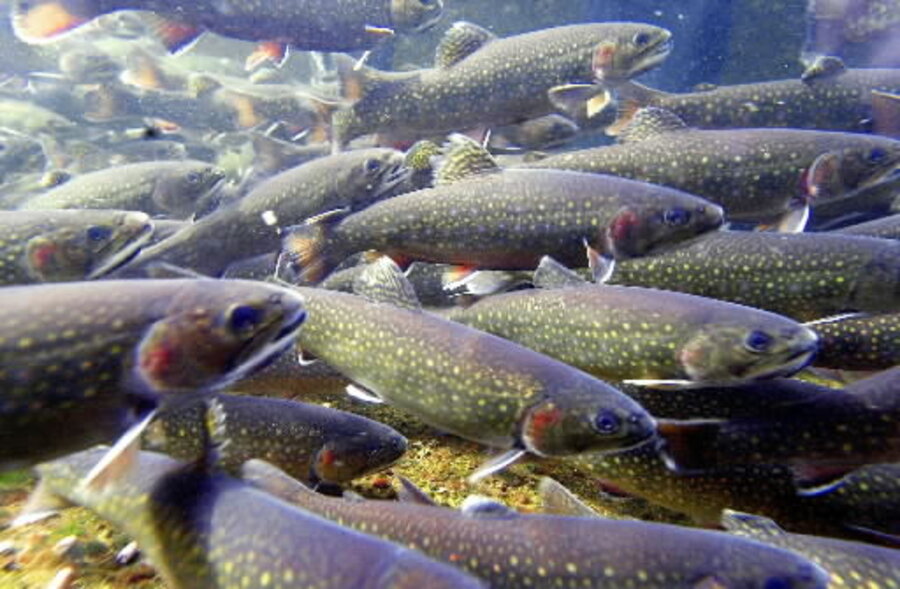To save its native trout, Yellowstone National Park poisons its rivers
Loading...
As the cutthroat trout in Yellowstone National Park struggles to survive under the ecological pressure of an invasive species of brook trout, wildlife experts have turned to a chemical poisoning treatment as the solution.
After the cutthroat trout are stunned and removed from the river, rotenone, a chemical that clogs the gills of fish, will be distributed throughout parts of the park’s water system, particularly Soda Butte Creek. Once the brook trout are eliminated, the cutthroat trout will be reintroduced to the river.
Poisoning an entire river may seem like an extreme solution, but it is the approach that is most likely to get the job done, officials say.
"It would be almost an impossibility to remove all of the non-native brook trout individually because of the sheer numbers and the size of the system," Timothy R. Strakosh, a scientist with the U.S. Fish and Wildlife Service, tells The Christian Science Monitor.
Rotenone is fast-acting. It only stays in the water system for a matter of hours, does not effect the potability of the water, and only targets a specific cross section of organisms: larger fish with gills.
"Systems tend to recover quickly if all the appropriate measures are taken and it sounds like that is exactly what they are doing in the Yellowstone systems," Dr. Strakosh tells the Monitor. "It is like a little reset button for the system. Generally within a year or two you wouldn't even be able to tell that there was any sort of event."
But as long as the brook trout remain, the cutthroat trout population is dwindling.
"The park places a high priority on preservation and recovery of this cutthroat trout population because of its importance in maintaining the integrity of the Greater Yellowstone Ecosystem, arguably the most intact, naturally functioning ecosystem remaining in the continental United States," park officials wrote. "Grizzly bears, bald eagles, and many other avian and terrestrial species use cutthroat trout as an energy source."
According to the National Park Service, the native cutthroat trout plays the most important ecological role of any fish in the park. Their population has been threatened, however, by non-native trout species introduced in the late 19th and early 20th century, including the brook trout. While the non-native species play an important role as well, they can also take up food resources, disrupt the food chain, and affect native species' health and genetic purity.
And for areas such as Yellowstone National Park that have a relatively low level of biodiversity and have open ecological niches are more susceptible to invasive species and are not able to fight them off, according to Strakosh.
"In a lot of the northern areas that have not seen a lot of disruption, you have these niches that can be filled by a prolific species like brook trout or lake trout. They can come right in and fit right into that niche and take over quite easily," Strakosh tells the Monitor.
Leah Elwell, the project director of the Invasive Species Action Network, tells the Monitor that there are a variety of compliance regulations and approvals, including a public review process, that a management team must go through before completing a rotenone treatment plan.
This approach to conservation also allows wildlife experts to quantify the results by performing subsequent electrofishing, the shock treatment used remove the cutthroat trout from the water, to see what fish are still present in the ecosystem. This would give scientists to analyze a cross section of the fish living in the river and see both how effective the rotenone was at eliminating the brook trout and how well the cutthroat trout have recovered.
If some individuals survive – and they often do, the brook trout in Yellowstone rebounded after a similar attempt to abolish them last summer – it is easier to combat the species with less aggressive conservation efforts when their numbers have diminished.
"The ultimate goal would be to remove the non-native species permanently and to see that the native species was rebounding successfully," Stakosh tells the Monitor.








